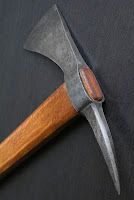Oscar Eckenstein: the first true innovator of climbing equipment?
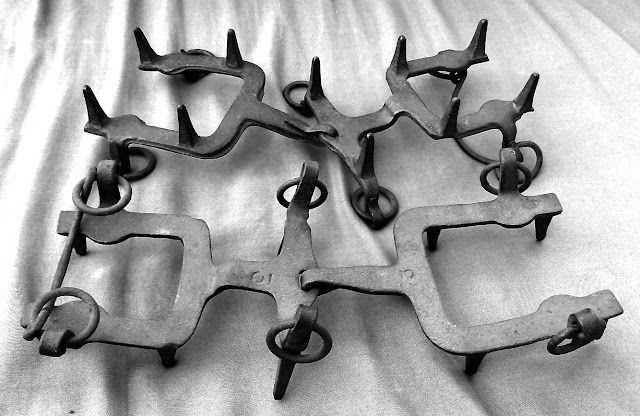 |
| Eckenstein prototype “Ice Claw”, or crampon, in my personal collection |
“What the ice climbers of the future will be able to climb, I know not. But I find it hard to believe that we have already reached the limits of what is possible.”
Oscar Eckenstein was an English rock climber and Alpinist of Jewish descent. By profession a railway engineer, in his leisure time he climbed in the Alps, the Lake District, and Snowdonia. He was a member of the early community of climbers who helped establish the foundations of the sport as we know it today.
By all accounts a difficult man to get on with, he had few friends but climbed with many of the pioneers. He was a particular friend of Aleister Crowley, O.G. Jones, and the Abraham brothers. I chose to use him as a character in my novel as I find him fascinating: pricky and easily offended, yet unassuming in the mountains (he rarely led routes) and the owner of a brilliant technical mind.
In this article I will talk a little about Eckenstein’s greatest contributions: his inventions and new techniques. This is an important subplot in my book so readers may be interested in learning a little more on the subject.
First, some context. In the 19th century, ice climbing went through several phases. In 1800, the Alpinist generally carried a baton or Alpenstock, which is a simple wooden pole shod with a steel spike. Climbers wore ordinary hobnailed boots on their feet, and generally wore crampons of some description (usually ill-fitting devices with four points, although other types were used). The guide carried a small axe, often an ordinary hatchet, which he used to cut steps for the rest of the party. Some very difficult routes were climbed with this method, generally through the icefalls of glaciers; but ice climbing was simply a means to an end, ie. to ascend the peak by the easiest route.
Next, some climbers started combining the two tools of hatchet and baton by adding a pick or blade to the top of the pole. The average baton length also decreased over the course of the early 19th century.
The ice axe as we know it was born at some point in the 1850s, when most ice axes had a two-part head composed of a pick and an axe blade. During the course of the 1860s the blade turned horizontal (an adze) as this was found more convenient for cutting steps in snow. The axe was still generally very long at this point; anything between a metre and a metre and a half.
The use of crampons fell out of favour gradually in the middle part of the 19th century. By the 1890s, crampons were not generally used by British mountaineers, thanks to the advanced art of nailing boots. Edward Whymper’s condemnation of crampons also helped to hasten their demise.
Ice climbers had grown used to the hazards of ascending steep ice: no safety from the rope, laborious step-cutting requiring enormous strength and stamina, slow progress over terrain often threatened by avalanche or rockfall. The technique of climbing was largely dictated by tradition and methods passed down from father to son. Climbers relied on their guides to do the hard work and keep them safe. Although by the early 1890s British mountaineers were encouraged to learn the craft of step-cutting, the average climber rarely had to put it into practice if he employed guides.
Guideless climbing became more usual in the mid to late 1890s, thanks to the exploits of A.F. Mummery and other leading figures. Suddenly climbers realised that ice climbing was damned hard and dangerous work. Interest began to grow in ways of making it faster and safer.
Enter Oscar Eckenstein.
He was the first man to apply reasoned, scientific thought to the craft of climbing ice. In the first years of the 20th century, he worked with a blacksmith named Henry Grivel, who lived in the Alpine town of Courmayeur. His vision was a simple one: to resurrect the crampon, and make it the centrepiece of a new advanced technique of ice climbing.
 |
| The original blueprints for the Eckenstein ice claw, from Alpinist magazine http://goo.gl/caXX9 |
The Eckenstein-Grivel crampon was a masterpiece of design for its day. It was designed to fit well (this would solve many of the problems of previous crampons). It was designed to be light, yet made of quality steel and very strong. It had ten long, sharp points to each boot. In short, it was the very first modern crampon which would actually be of use rather than a hindrance to the climber. Instead of cutting thousands of steps, the climber could simply walk up steep ice by turning his ankle and engaging all of the points with the slope. This was revolutionary stuff: it would make ice climbing faster and easier (hence safer).
Eckenstein’s new technique demanded a revised ice axe. He designed a new model with an 80cm shaft, short enough to be used by one hand. Nowadays we may balk at the idea of one-handed cutting with an 80cm axe, but in 1908 this was a radical improvement. With Eckenstein’s system, only occasional steps would need to be cut at the most difficult places.
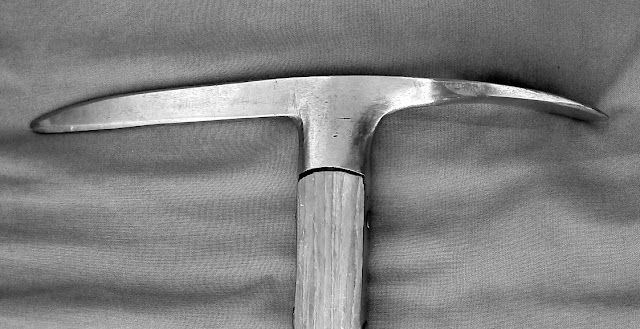 |
| The head of an ice axe similar to the one Eckenstein designed. The basic pattern was still in use 70 years later; this is a Stubai Aschenbrenner from the 1930s-1950s. |
It was slow to catch on. Grivel manufactured them, but British Alpinists regarded them with suspicion and step-cutting continued to be the norm for several decades, into the 1930s and the 1940s in some areas. In Scotland, some climbers continued to prefer climbing in nailed boots (albeit with much shorter gully axes) well into the 1960s.
But the revolution had begun. By the end of the 1960s, a new generation of scientific minds had refined Eckenstein’s idea yet further, using radically curved ice axes to climb directly up vertical ice. Front points on their crampons allowed them to walk up the steepest terrain without having to engage all ten points. (Front points were added in the 1930s, but again not generally used for this purpose until much later).
In the present day, climbing is a very different game, but the Eckenstein heritage is still obvious to see in the tools we use to climb. I own a pair of G12 crampons–still manufactured by Grivel in Italy, and although the design has changed, the philosophy has not.
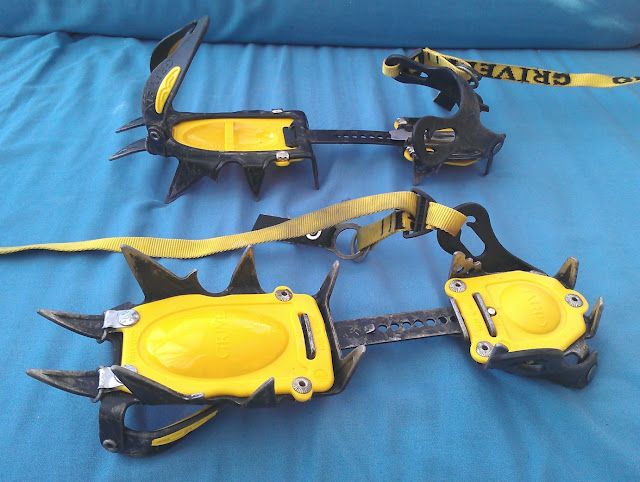 |
| The Grivel G12 crampon (2000s) |
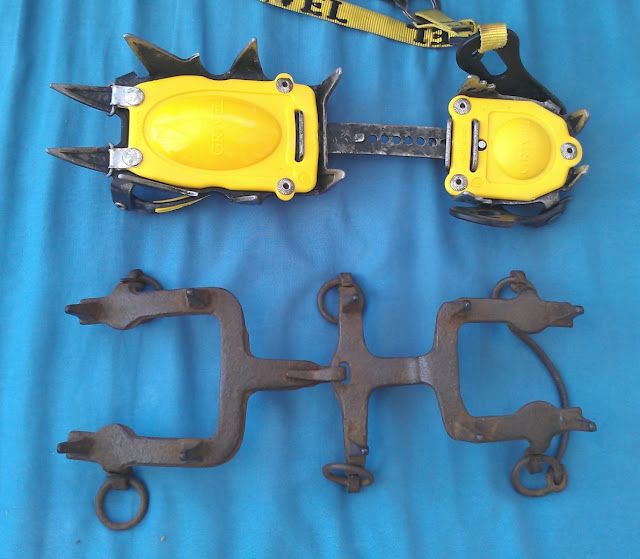 |
| Comparison between G12 and Eckenstein prototype |
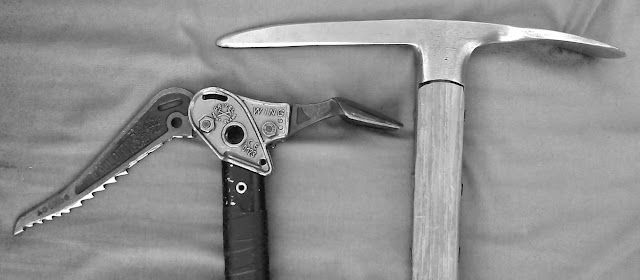 |
| Comparison between the Grivel “Alp Wing” ice axe (c.2009) and Stubai Aschenbrenner. One is designed for front-pointing ascents, the other cutting steps. |
Alex Roddie Newsletter
Subscribe here to receive my occasional personal newsletter in your inbox. (For the fun stuff, please consider subscribing to Alpenglow Journal instead!)

